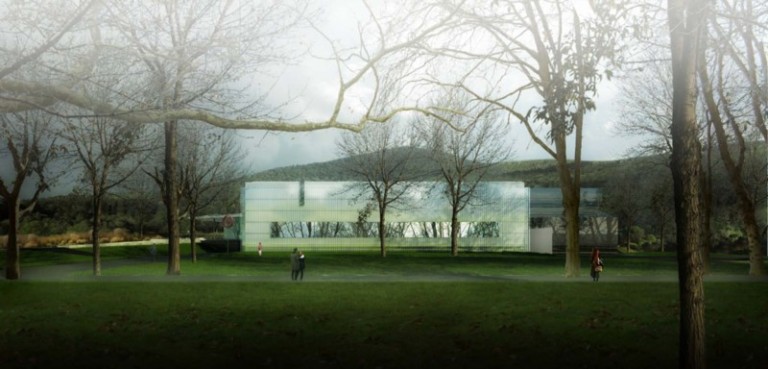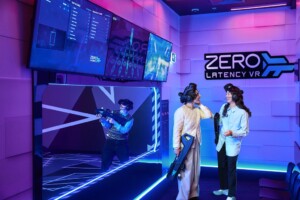The Corning Museum of Glass has unveiled design plans for its $64 million dollar expansion. The plans, which will see a new expansion to the North Wing, will have numerous features, not the least of which will be a glassblowing demonstration facility set to rival any in the world.
The new state of the art extension, which will measure an impressive 100, 000 square-feet, has been designed by architect Thomas Phifer and Partners and will enrich the glass-art experience of audiences from all over the world.
Related: Digital Media: Interview with The Field Museum’s CIO Joe Brennan / The Children’s Museum of Indianapolis: Creating Extraordinary Family Learning Experiences
Scheduled for completion in 2014, the project is funded by major benefactor Corning Incorporated and is set to be a stunning addition to the Museum, with its new light-filled galleries containing collections of contemporary glass.
“We are the world’s leading art museum dedicated to glass, ” said Karol Wight, executive director of The Corning Museum of Glass.
 “Over the past decade, we’ve experienced tremendous growth: in our collections; in our increasingly diverse audiences; and in the breadth and ambition of our public programs, especially those that allow visitors to experience the energy of artists and designers at work.”
“Over the past decade, we’ve experienced tremendous growth: in our collections; in our increasingly diverse audiences; and in the breadth and ambition of our public programs, especially those that allow visitors to experience the energy of artists and designers at work.”
“This is a transformative design that responds to those demands and further enables us to bring glass to life for the 400, 000 people who visit our campus each year.”
Visitors will have the opportunity to witness daily demonstrations, meet guest artists and attend glass design sessions.
The modern frontage itself will be made of white aluminium, with vertical blades of ultra-thin, speciality glass. On entrance, visitors will be greeted by high, well-lit areas as they make their way from the admissions lobby to the contemporary galleries and then on to the new glassmaking demonstration site.
The North Wing provides a perfect contrast to the crisp white aluminium and glass façade of the new contemporary gallery building, with the black exterior of the restored ventilator building. Phifer’s design, which will strip the façade down to its lightweight frame, will reveal the stunning historic ventilator and will reinstate the use of glass on the north and south walls.
The 26, 000 foot design will incorporate an area for the museum’s signature live glassmaking presentations, with retractable banked seating and a gallery level balcony offering 360° views of the demonstrations beneath. All of which can be enjoyed by up to 500 people at a time.
The new building will be the largest space anywhere dedicated to the exhibition of modern art in glass and will be capable of showing the museum’s ever-increasing contemporary works of art. The North Wing will also be able to provide a temporary exhibition gallery dedicated to art and design. The front of the building will incorporate a 150 foot long window, which will allow visitors to admire the campus green and galleries. The glassmaking area will also be accessible from the outside, allowing for programs both inside and out.
The campus buildings, which were designed by Harrison & Abramowitz, Gunnar Birkerts, Smith-Miller + Hawkinson and Bohlin Cywinski Jackson, will be linked by the new North Wing, which will improve circulation throughout the museum and allow visitors to enjoy glass architecture spanning over half a century.
Other improvements include new office and storage facilities, improved parking for bus groups and new educational spaces.
The museum’s café is also getting a makeover, thanks to Haigh Architects and Smith-Miller & Hawkinson, who are working to transform the theatre space into an additional live glassmaking venue.
The project also includes a ground-breaking design of the famous ventilator building of the former Steuben Glass factory, which is adjacent to the Museum’s current building.
“Contemporary glass loves light, especially natural light, and space, ” said Tina Oldknow, the Museum’s curator of modern glass.
“The new day lighting system represents a dramatic change in how contemporary works in glass are viewed, and the Museum’s monumental sculptures will have an exhibition space appropriate to their size. This is the first large-scale presentation of contemporary glass that takes advantage of natural light.”
“For us, learning the way light and glass work together has been truly rewarding. Glass is performance art…from its fluidity to the way it scatters light in space. We are making spaces to put people in touch with the magic of glass, ” Phifer said.
Reed Hilderbrand Associates are also working closely with the museum to design a 1 acre green that will allow the public to view the glass making areas from the outside.













